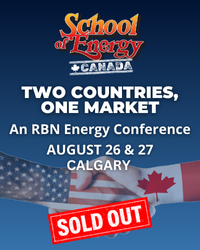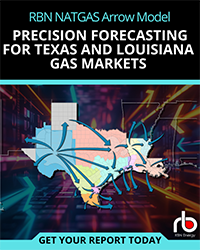Forty percent of the world’s fuel oil - the residual oil left over after extracting lighter products from crude oil - is used as bunker oil to power Ocean going vessels. Much of that fuel has relatively high sulfur content. Given that refineries sell fuel oil for less than the cost of crude – the bunkers market has traditionally been a convenient dumping ground for unwanted high sulfur residual fuel oil. New international regulations that came into force in 2012 drastically reduce the permitted sulfur content in bunkers after 2015 in the world’s populated coastal regions. Today we describe the impact the new rules could have on refiners.
This is installment six in our series on fuel oil in the Gulf Coast region. In the first episode we provided definitions for some of the many types and grades of fuel oil (see Yo Ho Ho and a Cargo of Bunkers). In episode two we looked at the Houston Fuel Oil Terminal Company (HFOTCO) that has been the dominant player in fuel oil blending, storage and export on the Gulf Coast for thirty years (see The Houston Fuel Oil Terminal). In episode three we covered the brand new kid on the Houston Ship Channel block – Battlefield Oil Storage Company (see The Kinder TransMontaigne BOSTCO Terminal). Parts four and five of the series were a two part survey of fuel oil terminals in the Caribbean (see Pirates of the Caribbean Terminals – BORCO and Pirates of the Caribbean Terminals Part 2). We discussed several advantages of the Caribbean from its deep water ports that allow transshipment of larger cargoes into smaller batches for delivery to the Gulf Coast to its strategic position on Atlantic and Pacific trade routes and looked at several Caribbean fuel oil terminals. This time we review ongoing changes to marine fuel oil regulations that threaten the bunker market for fuel oil.
We pointed out in the first episode of this series that marine vessels consume about 40 percent of world fuel oil output or about 3MMb/d. A great deal of that trade is international – serving marine fuel centers in Singapore, Dubai and Rotterdam. Houston is now also a growing center for the trade in fuel oil – as witnessed by the opening of the brand new BORCO terminal earlier this month. Marine fuel oil, known as bunkers, is one of the few large-scale markets for the residual fuel oil left over at the end of the refining process. The most common bunker grades are residual marine “G” and “K” – known by the acronyms RMG and RMK. Large Ocean going vessels use fuel oil because it is cheap compared to other refined products – generally selling for less than the price of crude oil.
For many years the fact that Ocean going vessels travel in International waters – outside of individual government jurisdiction, meant that the quality of fuel oil was not regulated. Big ships could happily burn fuel oil containing higher levels of materials like sulfur and nitrogen than were permitted for use on dry land. These materials have been subject to increased scrutiny and regulation by governments leading to tightening fuel oil quality specifications and emissions controls for their use in applications such as power generation. But the absence of such controls at sea meant that bunkers became a convenient market for refiners to offload high sulfur residual oil when no other outlet was available. All that is changing now.
In October 2008 the International Maritime Organization (IMO) adopted new standards to control emissions from the engines that power ocean going vessels. The new standards are geographic - ships operating in areas where air quality falls below certain standards (designated Emission Control Areas – ECA’s) are required to meet tighter emission limits. Beginning in July 2010, new and existing ships operating in ECAs were required to use fuels with maximum 1 percent sulfur content, decreasing to 0.1 percent in 2015. From January 2012 ships operating outside of ECA’s were required to use fuels with maximum 3.5 percent sulfur – reducing to 0.5 percent sulfur in 2020 (subject to review in 2018 but no delay past 2025). In addition, from 2016 onwards ships operating in ECA’s must acquire certificates proving that each engine has reduced nitrogen oxide exhaust by installing emission control devices.
The IMO regulations are enforced by geography. In effect the ECA areas cover the coastal regions that any vessel delivering cargo to large populations is likely to travel to. In the US for example, the map below shows that the ECA effectively covers all of the East, West and Gulf Coast regions (green lines) within a 200 mile distance – with the notable exception of the Caribbean (more on that later). The IMO regulations are enforced in the US by the Environmental Protection Agency (EPA - see the regulatory announcement here). They mean that any vessel visiting the US mainland is already restricted to using 1 percent sulfur bunker fuel and after 2015 will only be able to use 0.1 percent sulfur or 1000 parts per million (ppm). These restrictions are less severe than current US ultra low sulfur diesel (ULSD- 15 ppm) or proposed US “Tier 3” gasoline sulfur levels (10 ppm - see The Tears of a Refiner) but they nevertheless represent a significantly higher standard for refiners to meet. Once outside the ECA vessels are able to use higher 3.5 percent sulfur bunkers until 2020. Although these regulations have been predictably slow to materialize because they require agreement between participating nations, they have now placed an end date on the use of high sulfur bunker fuel in 2020.
Source: Environmental Protection Agency (Click to Enlarge)
Which presents refiners with a big challenge – because they either need to find a new market for 40 percent of their fuel oil or they need to reduce its sulfur content to meet the new bunker specifications - soon. A third choice would be for ship owners to install onboard scrubbers to remove the sulfur from engine exhaust – a process known as “flue gas desulphurization”. But that solution is considered expensive and unlikely to happen.
The challenge for refiners is that investments in the “bottom of the barrel” do not normally contribute positively to refinery margins. Fuel oil is usually sold for less than the cost of crude and there is no guarantee that investing to remove sulfur from fuel oil is going to change that fact. This year, for example, the premium of low sulfur fuel oil (LSFO) to high sulfur fuel oil (HSFO) at the US Gulf Coast has averaged $3.73/Bbl but West Texas Intermediate (WTI) crude still averaged $1.14/Bbl more than LSFO over the same period (see chart below – LSFO premium over HSFO is the blue line, WTI premium over HSFO is the green dotted line). So if LSFO is worth less than crude most of the time then spending money to upgrade refineries to reduce the sulfur content in fuel oil is basically a losing proposition. Significant investment would be required for refineries to produce fuel oil with very low sulfur. Unless that low sulfur fuel oil can be sold for a reasonable premium over the price of crude oil the return on investment probably would not be justifiable.
Join Backstage Pass to Read Full Article







